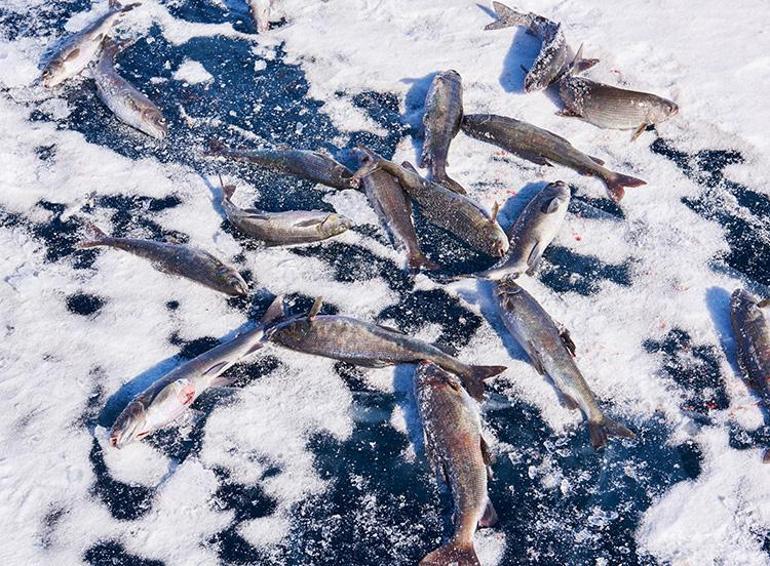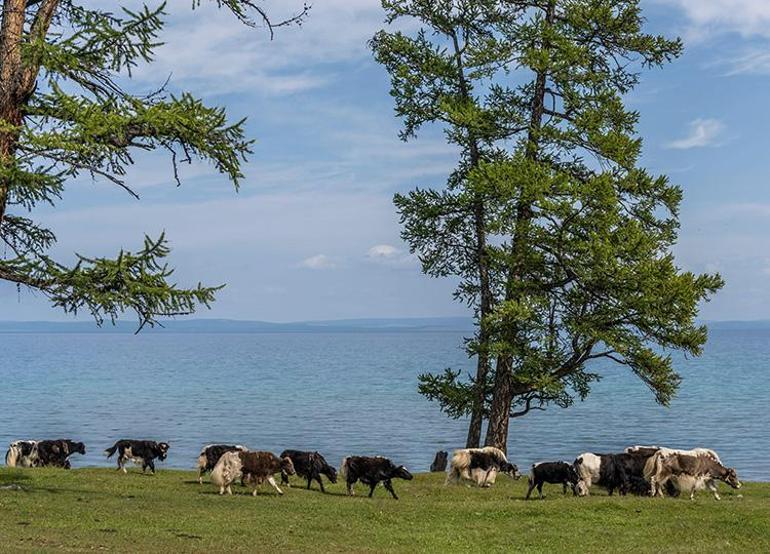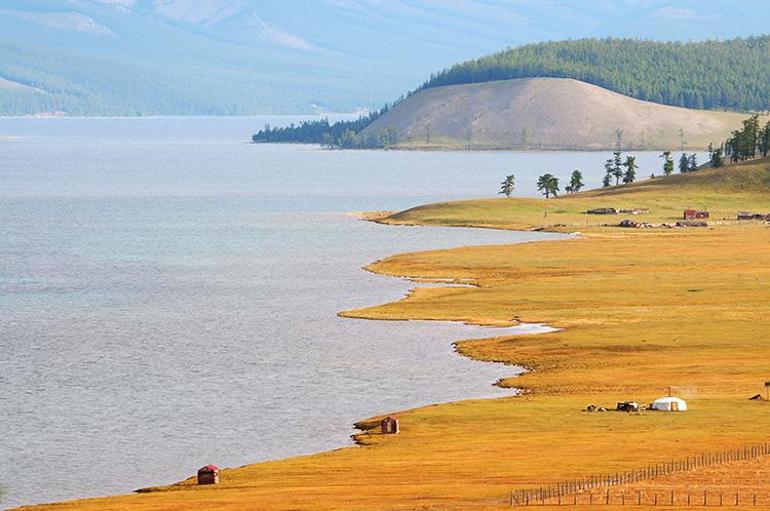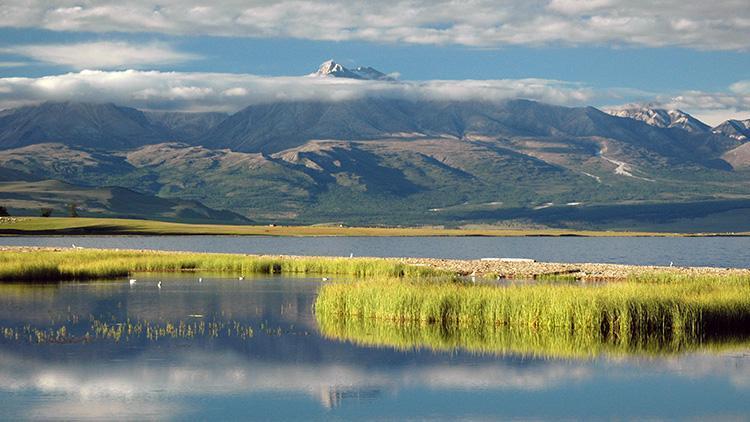Hovsgol is one of the most pristine lakes in the world. With its surrounding mountains, sparkling blue waters and fish species unique to this region, it is a natural wonder… But changes since the 1940s have jeopardized this beauty. Moreover, this situation concerns us all very closely. Here is the question and other details that scientists have been searching for the answer to for the last 15 years…
Lake Hovsgol is located in the middle of hills whose summits are covered with snow and skirts with pine trees. It is a natural wonder with wild flowers on its shores, wolves and deer living around it. Although it is quite isolated, it is surrounded by small towns, tourist huts and ‘ger’, traditional tents made of felt. Moreover, flocks of sheep, goats and yaks can often be seen grazing around the lake.
- Mental health of children with more siblings at risk
- Skeletons with rings around their necks found in thousand-year-old tomb
Hovsgol, the deepest and largest lake in Mongolia, is located a few kilometers from the Russian border in the north of the country. Hovsgol, which locals call the Blue Pearl because of the color of its sparkling waters, is considered one of the most pristine lakes in the world. Moreover, since it was formed more than 2 million years ago, it ranks first in the list of the oldest lakes.
Hovsgol has preserved its character and ecosystem for centuries, thanks to its remoteness from large settlements, its protected status as a national park and the small number of people living in the area. In recent years, however, climate change has been affecting Hovsgol and the people who depend on the lake for their livelihoods.
MONGOLIA IS ONE OF THE FASTEST WARMING COUNTRIES
Since 1940, the average air temperature in Mongolia has risen by more than 2 degrees Celsius. 2 degrees Celsius is more than twice the global average. This means that Mongolia is one of the countries most affected by the climate crisis.
The livestock sector is one of the most affected by this situation. Herds and shepherds are struggling to cope with the rising temperatures. Likewise, the fish living in Lake Hovsgol are also suffering from the increasing temperatures.
Lake Hovsgol is home to 10 fish species. One of them is the endemic and endangered Hovsgol shadow fish (Thymallus nigrescens). The males of this elongated fish, which does not attract much attention for most of the year, turn into a sparkling blue when the breeding season comes.

THE RESULTS ARE WORRYING
For the last 15 years, Mongolian and US scientists have been trying to understand the effects of the climate crisis on the Hovsgol shad. The results are quite alarming.
Mendsaikhan Bud, an ichthyologist at the Mongolian Academy of Sciences, told The Guardian that the Hovsgol shad, a cold-water species, is strongly affected by temperature increases.
What’s more, many of the streams that flow into Hovsgol, where fish find refuge during the breeding season, have dried up. “Now there is no water in these streams during the spring breeding season,” said Olaf Jensen from the University of Wisconsin-Madison. According to Jensen, almost 80 percent of the 96 streams that flow into Lake Hovsgol during the critical months of fish migration have dried up.
BABY FISH TARGETED BY HUNTERS
Another threat to the fish is overfishing. Fish are the most important food for the flock owners around Lake Hovsgol in the spring. Because at the end of winter the sheep are not yet in a condition to be slaughtered.
Juvenile shad are the easiest fish to catch at this time of the year. Hunters can easily catch the fish by stretching nets from one end of the creeks to the other. “The shad are easily accessible and catchable as they swim up the streams,” Jensen said.
Although net fishing is prohibited within the national park, individuals are allowed to fish for themselves during the breeding season.

THE NUMBER OF STORMS HAS DOUBLED IN THE LAST 40 YEARS
In fact, this system has been in place for many years. But the climate crisis and overgrazing have upset the balance.
The number of storms around Lake Hovsgol has doubled since 1980. This has led to more flooding and soil erosion. Moreover, since the 1990s, Mongolia’s grasslands have dried up due to overgrazing. All this has made herding difficult.
Herd owners who want to cope with the difficulties found the solution in fishing. Fishermen sell the fish they catch for additional income as well as consuming it themselves.
Today, Hovsgol shad can be found in many markets around the lake, Bud said. For example, an estimated 33,000 shad are caught each year in the Har Us spring, one of the most important streams for tourism and fishing.
BOTH THEIR NUMBER AND SIZE ARE DECREASING
The effects of all these changes can be observed quite clearly. For example, almost all of the shad owners Bud and Jensen interviewed reported that the shad population in Hovsgol had declined dramatically.
A significant proportion of the fish species living in the lake have also shrunk in size compared to the past. This could be due to overfishing, the disappearance of larger species, or increased energy demands on fish as temperatures rise. (Increased energy demands mean that fish have fewer internal resources to devote to growth.)
In 2023, a global analysis of thousands of animal and plant species showed that many fish species were shrinking. Scientists have suggested that the underlying cause of this situation is the climate crisis.

THERE IS STILL HOPE
The conservation of Hovsgol shad is crucial to maintaining the lake’s fragile ecosystem and sustaining the centuries-old livelihoods of the people living in the region. However, the steps taken to protect the lake are not enough.
Although local authorities have attempted to crack down on illegal fishing outside the breeding season, there are not enough people to police such a large area. Moreover, once the fish are caught and sold, there is nothing local authorities can do. Since fishing nets are cheap and easily accessible, confiscation by the authorities is not very effective.
Bud said laws and regulations protecting fish need to be improved.
But none of this means all hope is lost for the Hovsgol shad. Researchers have shown that in addition to populations breeding in the streams in spring, there is also breeding activity on the shores of the lake in summer. Jensen said this gives the shad some resilience against the effects of climate change. In other words, despite the drying and hunting in the streams, shad breeding in the lake can ensure the continuity of the species.
The given text is derived from The Guardian’s article titled “This pristine lake has endured for 2 million years. Why are its fish in crisis?”

